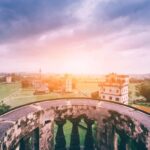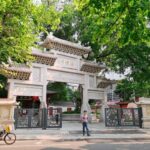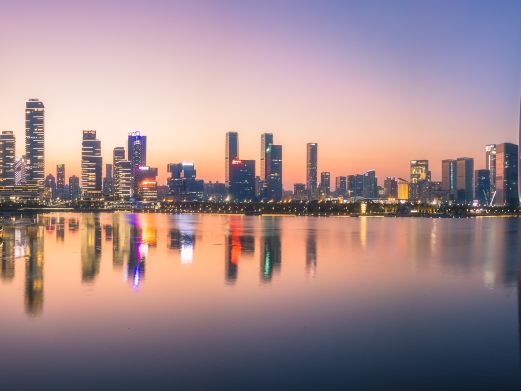Beishan Ancient Temple is located at the foot of Xianling Mountain. Facing south, it is built according to the mountain, covering an area of more than ten mu. With upturned eaves and corners, it has a magnificent appearance. Surrounded by mountains and full of lush trees. In front of the temple, the waves of Yumen cascade down. Inside the temple, there are clusters of flowers and trees, creating a beautiful and secluded environment.
It is the crown of temples in this county. Beishan Ancient Temple was first built during the Jiajing period of the Ming Dynasty (1522 – 1566). Later, it was renovated and expanded many times in successive dynasties. The temple was originally a large courtyard with four halls. On the right side of the first hall is the Zheng Xianweng Shrine, and on the left side is the Han Daxian Shrine. In the middle is the main gate. On the lintel are engraved the four characters ‘Beishan Ancient Temple’. A pair of stone lions stand majestically on both sides of the mountain gate. Inside the gate is a release pond. The clear Jiuqu River slowly flows in from the ‘Ancient Cave Rhythmic Spring’ behind the temple. On the pond is a Jinshui Bridge. After crossing the bridge is the second hall, the Xuanyuan Hall. On the right side is the Sanyuan Shrine, and on the left side is the Seven Sages Shrine. Inside the shrine, eight stone inscriptions from the Tang, Song, Ming and Qing dynasties, including the cursive script ‘And Look at Shanzhai’ by the calligrapher Mi Di of the Song Dynasty, are embedded in the wall. The brushwork is exquisite and rare in the world. On the right side of the third hall is the Wenchang Shrine. In the middle is the Guanyin Pavilion. On the left side is the Songkui Garden for Reading. On the wall is embedded the stone inscription ‘The Bell Tolls at the Temple on a Moonlit Night’. This stone inscription was written by Ouyang Xiu. Another stone inscription ‘Buddhism Spreads in Beishan Ancient Temple’ was written by Su Dongpo. At present, Beishan Ancient Temple is a provincial key cultural relic protection unit. Visiting the temple gate and looking into the distance, the mountains are covered with green brocade, and the Huangchuan River is like a silver belt. The fields in the suburbs are neat, and the buildings in the urban area stand tall. The vibrant scene is all in sight.Opening hours: Open from 8:00 to 17:00 all year round. The specific opening hours are subject to the on-site announcements of the scenic spot.










